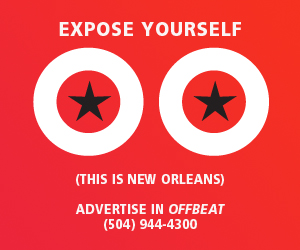Television before Treme treated musicians as outsiders—frequently as degenerates, at least as self-absorbed and often predatory. The HBO drama implies that they’re just as much a part of a city as lawyers, laborers and bar owners, and it’s a theme that writers John Swenson and Keith Spera echo in their new books.
In New Atlantis, OffBeat consulting editor John Swenson recounts the efforts made by musicians to help with New Orleans’ recovery after the post-Katrina flooding. His account may be a little Bywater-centric—though that’s where a lot of the action was—and he focuses less on what big names did and more on the working class of New Orleans musicians, artists that people outside New Orleans might not know but who played meaningful roles in their neighborhoods or the music scene. He writes with passion and a strong sense of outrage of the roles played by musicians such as Glen David Andrews, Shamarr Allen, Helen Gillet and Tab Benoit, not so much because they chose them as because responsibilities fell to them. Making music, as Swenson depicts it, is a civic act as much as an artistic one, and the stories of musicians can’t be separated from the larger story of New Orleans after Katrina without missing an essential element.
Spera’s Groove Interrupted is less obviously the story of a community, with each chapter dedicated to one artist, ranging from household names to artists whose careers largely exist in New Orleans. But when he tells stories about Gatemouth Brown, Mystikal, Alex Chilton or Phil Anselmo, Spera tells people stories. Change their occupations and these could easily be the stories of elderly insurance salesmen and high school chemistry profs who want to be left alone. That doesn’t mean Groove Interrupted is devoid of music. The chapter on Jeremy Davenport’s recording sessions illustrates hilariously how musicians can get lost in the world of possibilities; nor are the specifics of the personalities lost in the commonalities. Fats Domino’s story is one of a man late in his life in New York City, but his eccentricities are very much his.
Taken as a whole, the chapters add up to tell the story of people—not just musicians—in a city and the challenges they face.





